Alcatel 1 Android Go Review
Alcatel 1 Android Go
Extremely lean and meanly priced – but has it rolled things too far back?
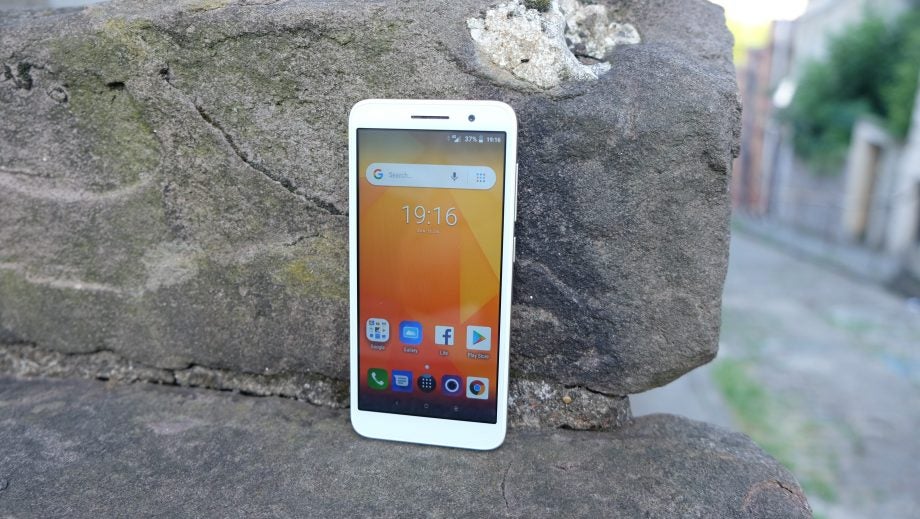
Verdict
Pros
- Very cheap
- Clean take on Android
- Compact body
Cons
- Poor, low-res display
- Terrible performance
Key Specifications
- 5-inch 960 x 480 LCD
- MediaTek MT6739 CPU
- 1GB RAM
- 8GB storage + microSD
- 5MP rear camera
- 2000mAh battery
What is the Alcatel 1?
The Alcatel 1X was the world’s first Android Go phone when it launched at MWC 2018 in February, offering a lightweight Android smartphone experience for less than £100.
Believe it or not, the Alcatel 1 strips things back even further. For just €79/$89 (around £70), you’re getting a bare bones offering with just a few noteworthy nods to recent smartphone developments.
In most ways, though, it’s an unwelcome throw-back to a bygone era of lacklustre Android phones. Sure, it’s cheap. But that isn’t the same thing as being good value for money.
Related: Honor 7S
Alcatel 1 – Design
Alcatel boasts of the Alcatel 1’s “brushed metallic finishing”, but don’t let that fool you. This is a plastic phone, through and through.
You even have to remove the thin plastic rear cover in order to slot in your SIM card and microSD card. Remember when that was a thing?
Aside from a few creaks and crackles, though, the Alcatel 1 is a reasonably pleasant handset to hold. It’s a lot smaller than we’ve come to expect from modern smartphones, and harks back to a time when 5-inch displays were considered quite big.
Rediscovering the joys of genuine one-handed usage was one of the more pleasant aspects of my time with the Alcatel 1. You can operate the phone comfortably with the thumb of your holding hand, although you’ll need to readjust a little to bring down that notification menu.
Related: Best cheap phones
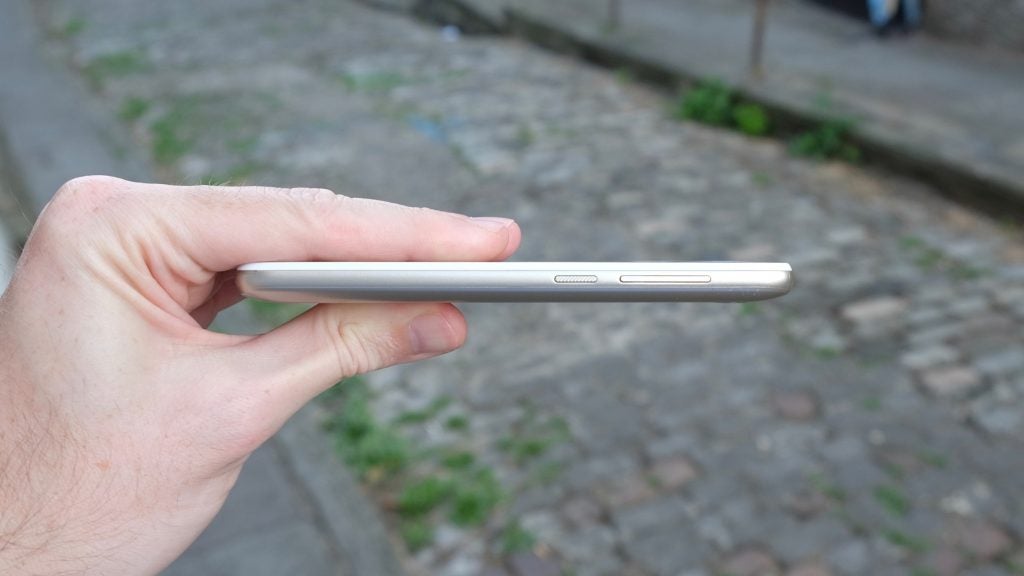
It isn’t particularly light (134g) or skinny (9.8mm) for a phone of this size. I’m not convinced by the pearlescent gold finish of the rear and sides, either, although there’s an all-black model out there to balance things out.
Far more problematic for the Alcatel 1 design is what isn’t on the back of the device. Unlike the Alcatel 1X, there’s no fingerprint sensor.
To my mind, this has become a must-have feature in any smartphone, regardless of price. Not having the ability to jump straight into the homescreen with a touch means negotiating the dreaded Android PIN entry screen, which continues to mystify with its requirement to hit an Approve button.
Factor in a lack of NFC, and you won’t be making Google Pay payments on the Alcatel 1 either.
Are either of these component compromises worth the £50 to £80 you’ll save by not going with a phone that has them? Perhaps. But there are plenty more compromises to come that arguably aren’t.
Alcatel 1 – Display
It might be literally half the price of the Moto G6 Play, but the Alcatel 1 almost appears expensive when you take a look at its display.
This is a small, dull, blurry and overly reflective screen, which is all but impossible to use outside on a bright day. There’s a thick border between the bezel and the actual screen, and there’s also a sizeable gap to the surface glass. Viewing angles are woeful, too.
Taking a look at the display’s vital statistics will confirm these initial impressions. A 5-inch LCD with a 960 x 480 resolution is the kind of specification that transports you back six years or more. Or at least it would if not for those extra vertical pixels.
Related: Best Android phones
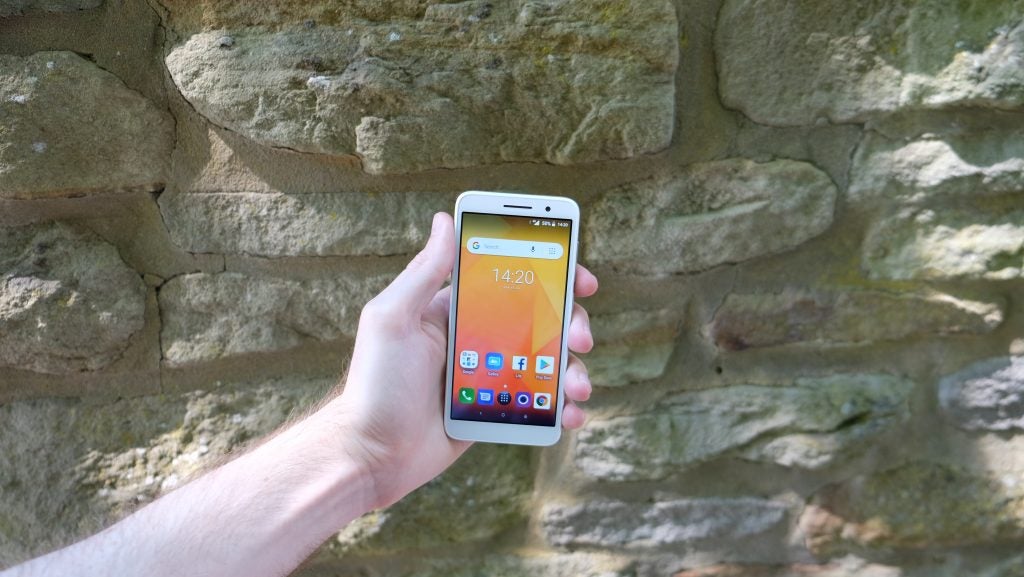
You see, despite the Alcatel 1’s backwards-looking size and resolution, it adopts a very modern 18:9 FullView aspect ratio. This serves to help with that compact form factor, and that’s about it for practical benefits.
Suffice to say, all media – more or less without exception – looks distinctly sub-optimal on the Alcatel 1’s display. From downloaded video content to shared photos to games, it all looks worse than on any budget 720p smartphone display of recent times.
Alcatel 1 – Performance
If you’d hoped that the Alcatel 1’s poky display might lead to a bonus performance boost, you’d be mistaken.
The phone’s MediaTek MT6739 CPU might have significantly fewer pixels to push around than most other modern smartphones, but it remains a poor processor any way you cut it. Especially when that silicon is backed by just 1GB of RAM.
It’s another example of a specification that seems to come from the smartphone past.
The Alcatel 1 isn’t a total write-off in general use, but you’ll certainly bump up against the limitations of its setup at various points. Whether you’re trying to jump in for a quick snapshot using the lock-screen camera shortcut, flicking between open apps, or waiting for an app to load up in the first place, there’s very often a hefty pause in proceedings.
Perhaps unsurprisingly, 3D games such as Guns of Boom struggle to run on the Alcatel 1. There are almost constant stutters, as well as some major control glitches. On that front, it’s also worth noting that the display tech can only manage two simultaneous touches.
Even the super-optimised Super Mario Run, while playable, isn’t without the odd patch of performance slow-down here on the Alcatel 1.
Related: Best Android launcher
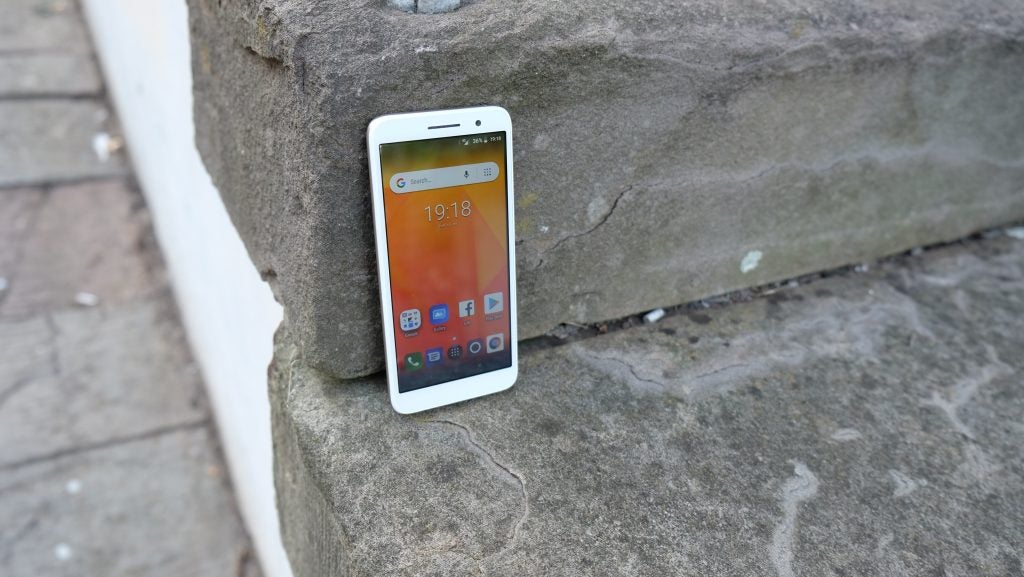
Things are a little more mixed on the 2D sprite-pushing front. Classic fare such as Punch Quest ran just fine, but newer title Beat Street brought the phone to its knees. It was literally unplayable.
It shouldn’t surprise you to learn that the Alcatel 1’s Geekbench 4 benchmark scores aren’t particularly hot. An average multicore score of 1425 puts the Alcatel way short of the Moto G6 Play (2340) and even the Alcatel 3V (1791) in the class above it.
It’s even a little less than the Vodafone Smart N9, which is much closer to the Alcatel 1 in pricing terms.
The recurring defence with the Alcatel 1 and its flaws is that it’s a very cheap phone for a very different market. Of course, it isn’t going to be as good as more expensive efforts. But that justification only gets you so far (for my money, at least) when the phone frequently dips below basic standards of usability.
Alcatel 1 – Software
The Alcatel 1 runs on the Go edition of Android 8.1 Oreo. This is a stripped back, simplified take on Google’s OS that’s intended to offer fluid performance and lower data usage on entry-level hardware such as this.
It isn’t strictly speaking a stock take on Android. Alcatel still applies some of its own UI flourishes, including a hideous default wallpaper and modified menus. But it’s a very streamlined, fat-free experience.
Refreshingly, there’s little in the way of bloatware or duplicate apps. Instead, you get a small selection of Google applications, many of which are themselves stripped-back Go versions.
Gmail, Google Assistant, Files, Maps and the Google search app are all here configured in lightweight Go form. Maps Go is perhaps the Google app that’s most obviously different from its standard form, with a smaller, less resource-intensive default map view. The aforementioned search app, meanwhile, also provides links to lightweight web apps for popular services.
Related: Best iPhone
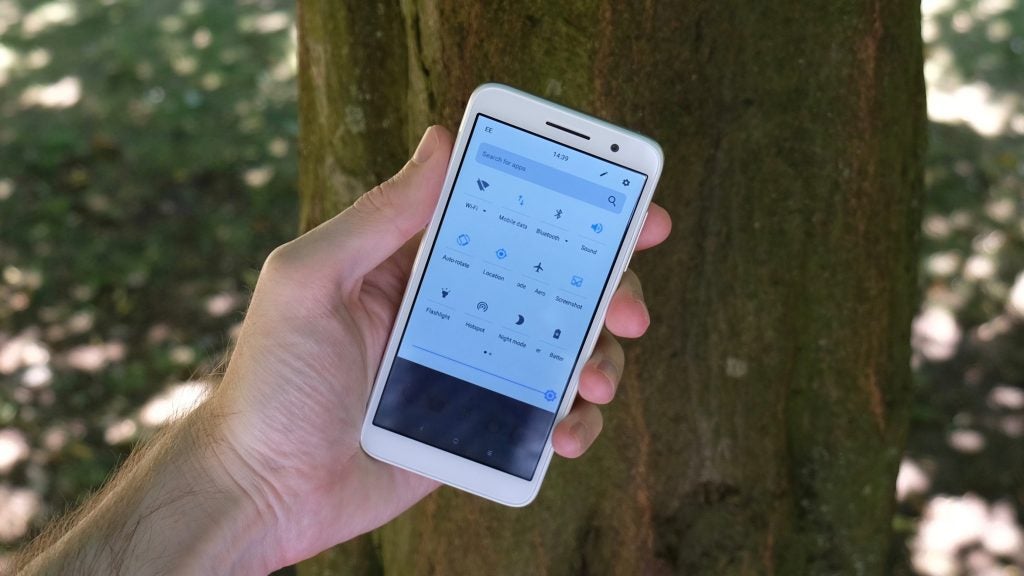
On a similar theme, you also get a Lite version of the Facebook app installed as standard, which is an understandable addition given the social network’s ongoing ubiquity.
A note of warning when it comes to adding to this modest app provision, though: the Alcatel 1 packs only 8GB of internal storage, and 2.4GB of that is taken up by the OS itself. It took only a handful of game and app downloads to bring the phone up to 73% full.
You can add up to a 32GB microSD card, although when you’re shopping at this extreme end of the market, an extra £10 is a much more notable expense.
Alcatel 1 – Camera
The Alcatel 1 comes packing a modest 5-megapixel rear camera, and an even more modest-sounding 2-megapixel front camera. As is the brand’s wont, those cameras can ‘interpolate’ up to 8-megapixel and 5-megapixel respectively, although you’ll have to bump them up manually.
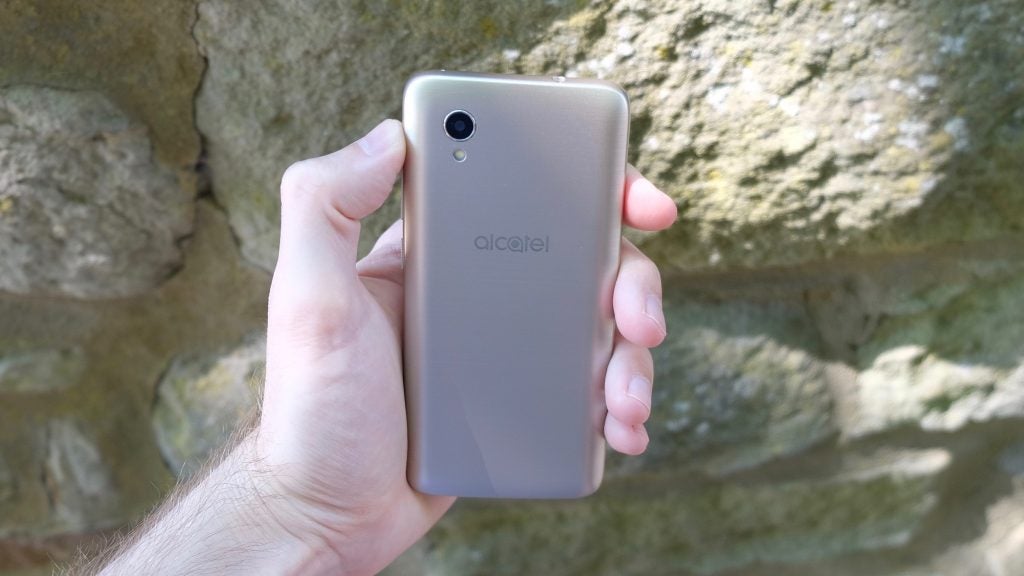
Whatever the true final pixel count, shots with the Alcatel 1’s main camera are of a low standard. They’re full of noise, even in strong lighting, while colours tend to be washed out.
There’s no autofocus here, nor can you tap to focus on a specific object. Instead, most objects in a scene tend to be approximately in focus – even when you take a close-up. There’s none of the artful bokeh effect fun to be had with more expensive camera phones.
Conversely, background elements tend to have a strangely artificial smudginess to them.
There is a manually activated HDR mode here, which is by no means a given in an affordable phone. It proves to be reasonably effective, if rather limited in its reigning in of extreme light and shade.
Video capture can go up to 1080p Full HD, although it’s set to 480p by default – presumably to save space on the phone’s limited internal storage.

Things get noisier and blurrier when shooting indoors

It’s a very soft, fuzzy image overall, as you can see in the fine details of this picture
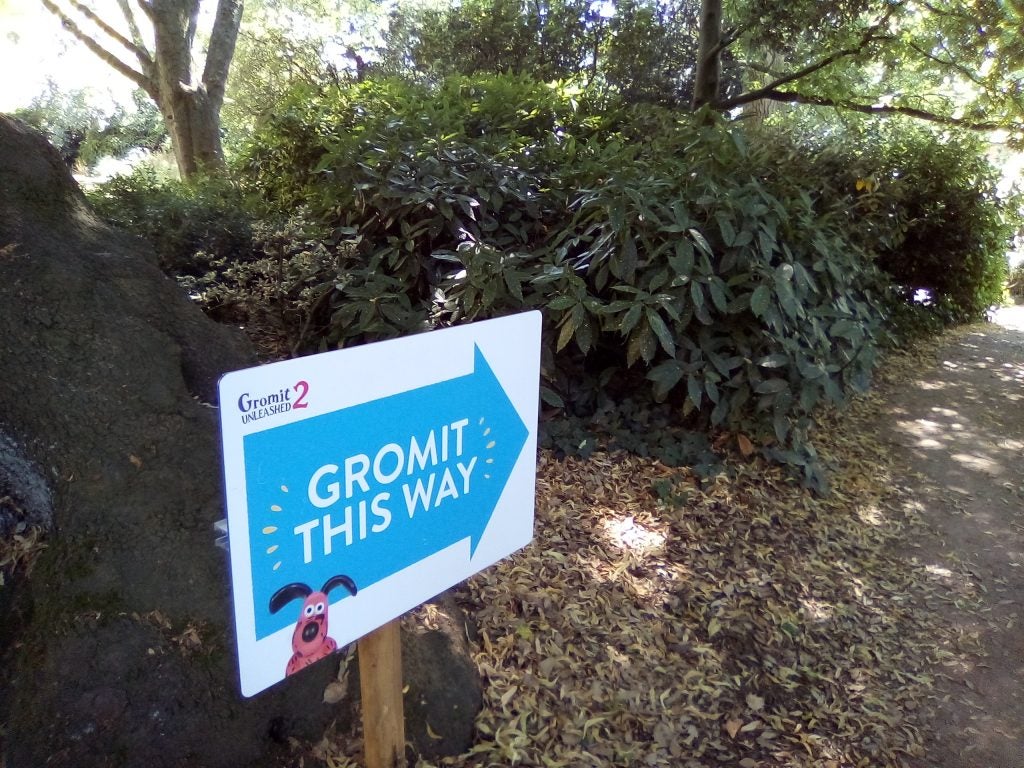
The camera struggles with this shady area, as seen in the noisy blue of the sign and the bleached-out background

There’s no autofocus here, but check out the fuzzy background further up the street
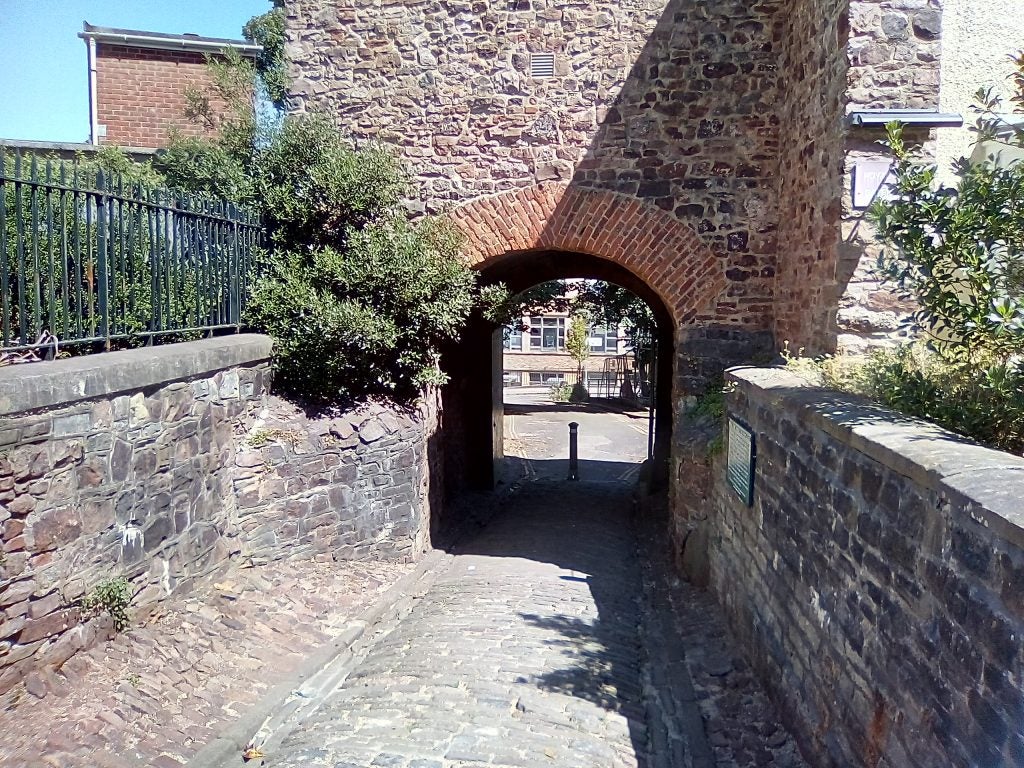
Flipping HDR on doesn’t give a pronounced improvement, but it doesn’t look too unnatural either

HDR is off by default, and the Alcatel 1 camera can struggle with bright elements

Note the level of noise in the sky and the fuzziness of the edges of the tree
Alcatel 1 – Battery life
The Alcatel 1’s 2000mAh battery is way smaller than average these days. But then, so is the phone’s display size and pixel count, which is the most common power hog.
This balances the phone’s battery performance somewhat. You’ll be able to march through a day of fairly light usage without too much of a problem.
I say ‘light usage’, because that’s all you’ll be doing with the Alcatel 1. For the reasons outlined above, you won’t be wanting to engage in anything more hectic than the occasional simple game or video clip.
This simply isn’t the phone on which to watch extended video content or play 3D games. If, for some reason, you do then know that it will likely hit that compact battery hard.
I watched my usual minute downloaded TV episode with the screen brightness cranked right up to max (which really isn’t very bright), and it sapped 19% of the Alcatel 1’s battery life. By comparison, the slightly more capable Alcatel 3V lost 16% in this test, the Honor 9 Lite lost 14%, and the range-topping Alcatel 5 lost just 5%.
I normally see how well a phone’s battery responds to 15 minutes of Guns of Boom gameplay at this point, but as mentioned above, the Alcatel 1 doesn’t seem to enjoy running that game at all.
All in all, the Alcatel 1 will see you through a day of normal usage. Anything more, and the phone will struggle in all manner of ways.
Why buy the Alcatel 1?
The Alcatel 1 is a new kind of low-priced smartphone that runs on the bare bones Android (Go Edition) OS. It’s ostensibly ideal for those on the strictest of budgets, when paying three figures for a new phone is simply too much of a stretch.
It’s a laudable aim, but the resulting product simply doesn’t pass muster. The screen is distractingly bad, the performance isn’t fluid despite the cut-down take on Android, and the camera is some way short of adequate.
It feels a little churlish to knock the Alcatel 1 when it’s clearly intended to bring more people into smartphone ownership. But it simply drops well below the threshold of what we’d deem as acceptable performance in a 2018 handset.
There seems to be a lack of really good sub-£100 phones out there at the minute, so if you’re looking in this price-range it might be worth waiting to see what the Moto E5 Play Go Edition holds (we’ll have a review of this soon). There’s the Honor 7S (£99) which is still a very slow phone albeit slightly better than the Alcatel 1 and the Moto G6 Play (£159.99). You might be paying a lot more for the G6 Play, but if you can afford it you’ll certainly notice the improvements in long-term use.
Verdict
The Alcatel 1 is a well-built phone, available for an eye-catching sub-£100 price. However, the quality of its display and the level of its performance simply don’t make the grade.
How we test phones
We test every mobile phone we review thoroughly. We use industry standard tests to compare features properly and we use the phone as our main device over the review period. We’ll always tell you what we find and we never, ever, accept money to review a product.


